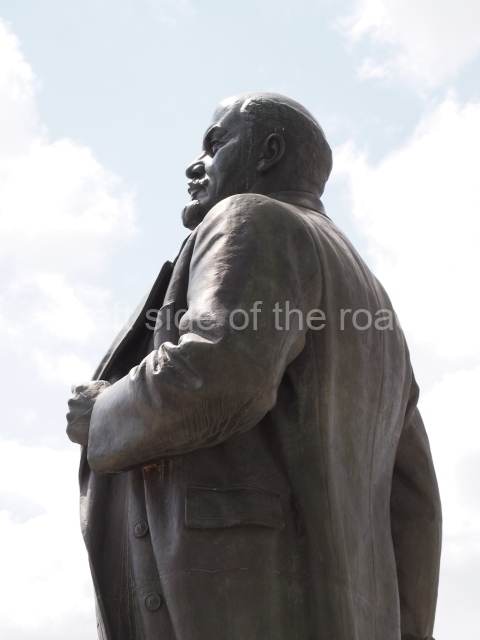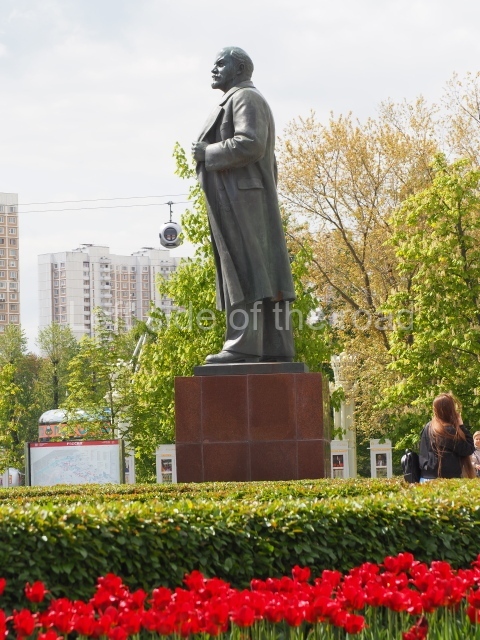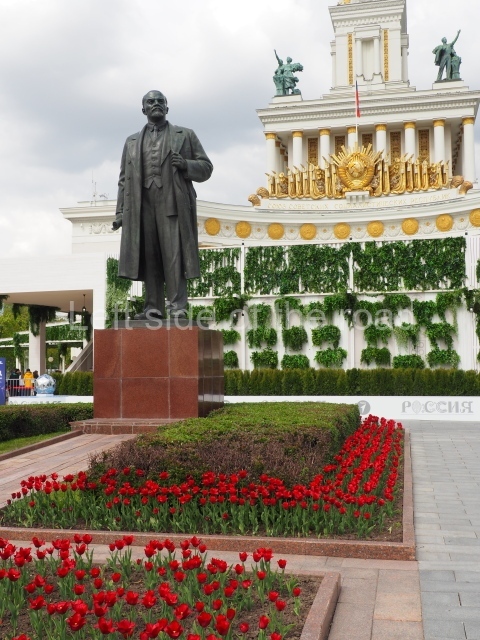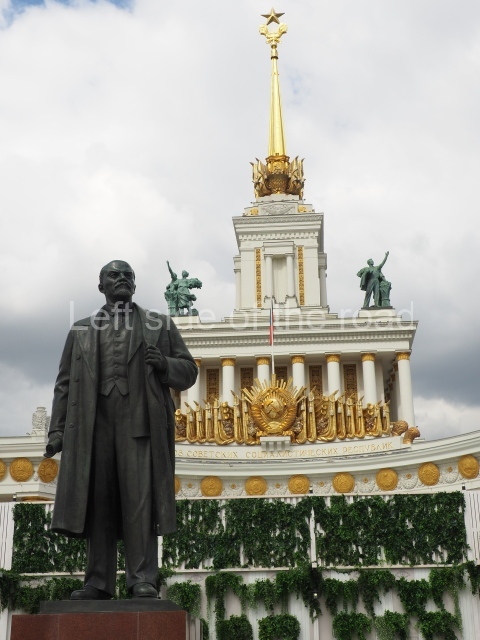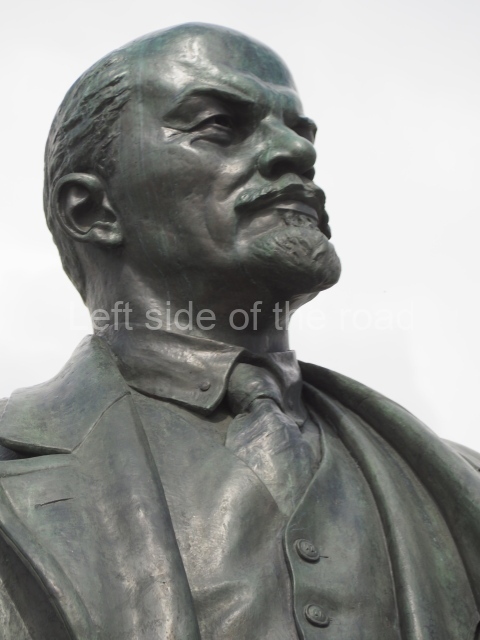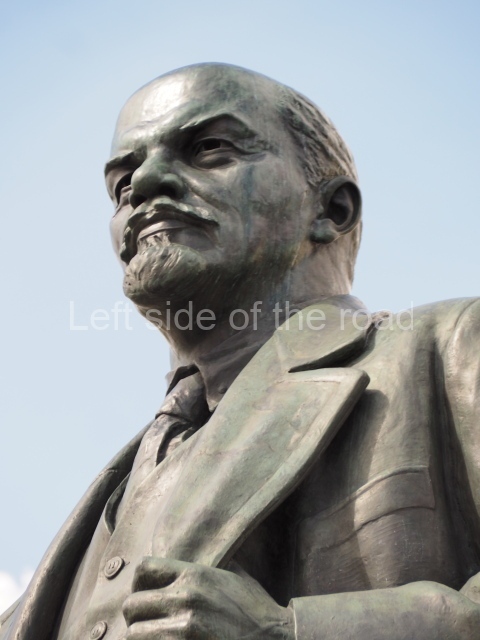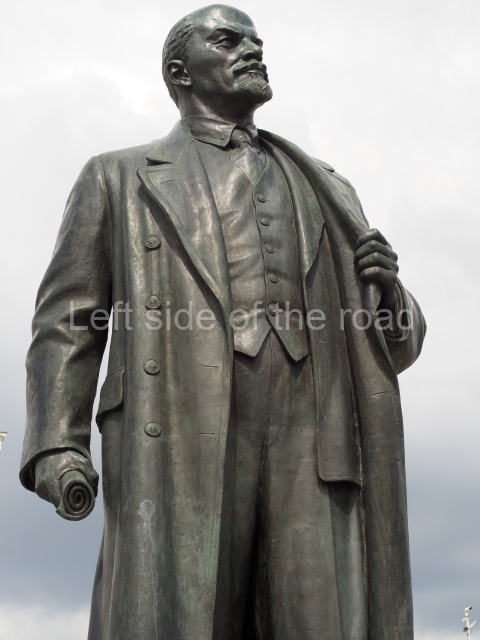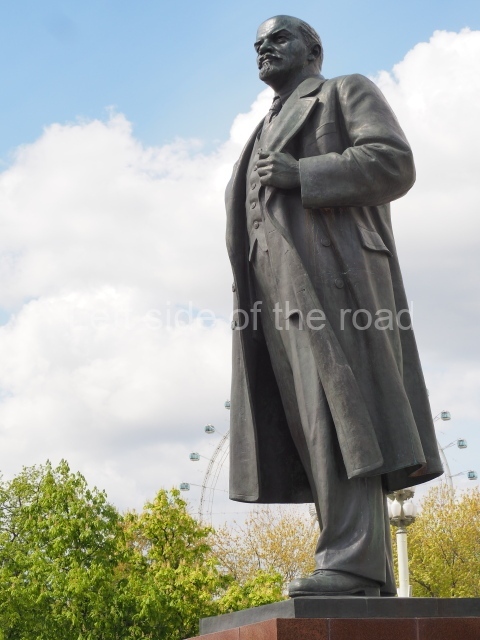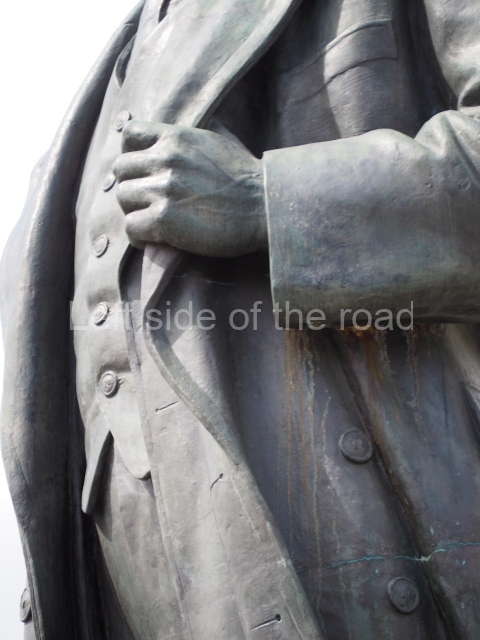Statue of VI Lenin at the VDNKh – Moscow
When the VDNKh (the Exhibition of Achievements of National Economy) was first built in its present format, from the late 1940s to the 1950s, once you passed through the arches of the main entrance the statue of Lenin would have been the first real structure you would have come across.
After entering the park there was a long, wide ‘square’ with a grassed area and a series of fountains on either side. This would take you towards Pavilion 1, the pavilion of the Russian Soviet Republic. Placed in front of this building was a statue of VI Lenin.
So, originally its prominence was obvious. It was the first construction in the park that any visitor would come across. And all visitors would pass this statue as the rest of the park used to spread out behind. Present structures and attractions on the left and right of this entrance square are more recent additions as are other, newer entrance points.
However, relatively recently (within the last four years, as far as I can tell) a new, ugly, blue, tubular glass and steel pavilion has been constructed in this open space, completely changing the atmosphere and the approach to the park. The way it was designed originally the visitor would be initially confronted by the grandeur of Pavilion 1 with its towering spire surmounted by a large golden star. After that first impression visitors would be able to experience the various buildings within the park representing the other Soviet Republics. So, although this modern ‘transformation’ hasn’t physically destroyed the buildings it has completely changed the initial experience for the visitor on entering the park.
The statue of Lenin is placed exactly in the central point of the building behind (symmetry dominates Socialist architecture of the post-Patriotic War period) and is one of the biggest in Moscow. It is also probably the one which is seen by the greatest number of people, the park being busy virtually every day of the week.
When I visited the park in 2024 not only was there this ugly tubular building filling the grand approach to Pavilion 1 itself there was also a temporary structure attached to the front of the building. This, I believe, was part of a temporary exhibition and hopefully has been removed by now. However, all these new and/or temporary structures only seek to diminish both the buildings and the impression that was part of the original design.
The statue depicts Lenin standing, looking slightly up and towards his left. He’s wearing an overcoat, which is open, and his left hand is clutching the lapel. His right arm just hangs loosely by his side. The statue is placed on a plinth, possibly a couple of metres high, and is probably twice life-size.
On either side of the plinth there are 4 rectangular flower beds with low green shrubs which are surrounded, on three sides, by red poppies (at least in the spring and summer).
Sculptor;
P.P. Yatsyno
Year:
1954
Location;
VDNKh is located in Ostankinsky District of Moscow and is served by VDNKh subway station, north east of the city centre, on Line 6, the brown line. The statue stands in front of the Russian Soviet Republic exhibition hall, about 100m inside the main entrance gate of the Exhibition site.
GPS;
55°49′47″N
37°37′56″E
Opening times;
‘VDNKh is open around the clock’.
Entrance;
Free to the complex.




